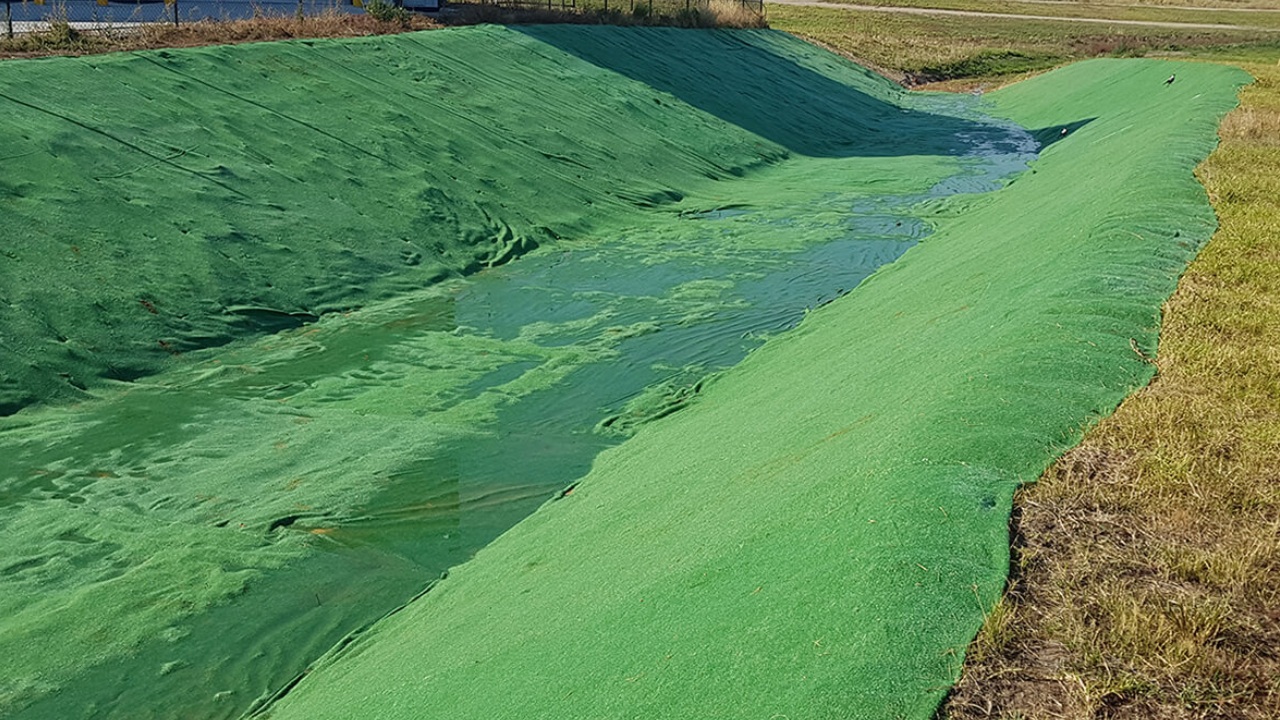Flooding is an unavoidable natural occurrence. Although good design can go some way to improving the strength and durability of roads and embankments, there is often a significant amount of damage after flood events that can be rectified and managed with the use of geosynthetics.
Immediately after the flood: how to manage remediation works safely and effectively
Good geosynthetic engineering is key to mitigating minor flood damage, but occasionally major floods can wreak serious environmental havoc on roads and pavements, virtually destroying them.
The cleanup, remediation and new installation of geosynthetics need to be approached carefully, especially if works are beginning soon after the flood event. Destabilised ground and embankments, and saturated ground can make for complex working conditions that require extra strength and stabilisation whilst work is being undertaken.
Heavy rainfall and eventual flood runoff from higher ground can result in surface erosion, soft and unstable soils, and percolation of water through the ground. Careful assessment of the ground conditions needs to be made by an engineer, as well as reporting on any new erosion, landslips or weakened areas in the vicinity of the area to be repaired.
Often the work zone itself needs to be strengthened and reinforced with a geogrid to enhance the stability of the base course, enabling heavy earthmoving and lifting equipment to safely access the area.
Geogrids can be an excellent solution for stabilising working platforms and access roads, allowing critical repair works to be carried out. And when it comes to slopes and embankments, geocells can provide ongoing strength and support to the soil, especially when revegetated.
Rebuilding for the future: Geosynthetics for flood mitigation
To mitigate the damage caused by future floods, engineers need to reduce the interaction between water and soil. This can be done by reducing the scour effect of water on structures, or by increasing the strength and resistance of the ground itself.
Strengthening the ground can be achieved with the aid of geosynthetics such as geogrids, rock mattresses or heavy-duty erosion control matting. Installing a geosynthetic product can often offer a long term solution, and provided the relevant environmental factors have been taken into account, it can also help mitigate future flood damage.
Turf reinforcement mats (TRMs) and reinforced erosion control matting can provide stability to slopes and gradients, preventing landslips and reducing the damage caused by flood events.
Get advice on geosynthetics for flood repair and mitigation
At Polyfabrics, our geosynthetic engineering team can offer advice on a wide range of solutions for flood mitigation, ground rehabilitation, environmental protection and coastal erosion issues.
Get in touch with our specialist team to find out more.

